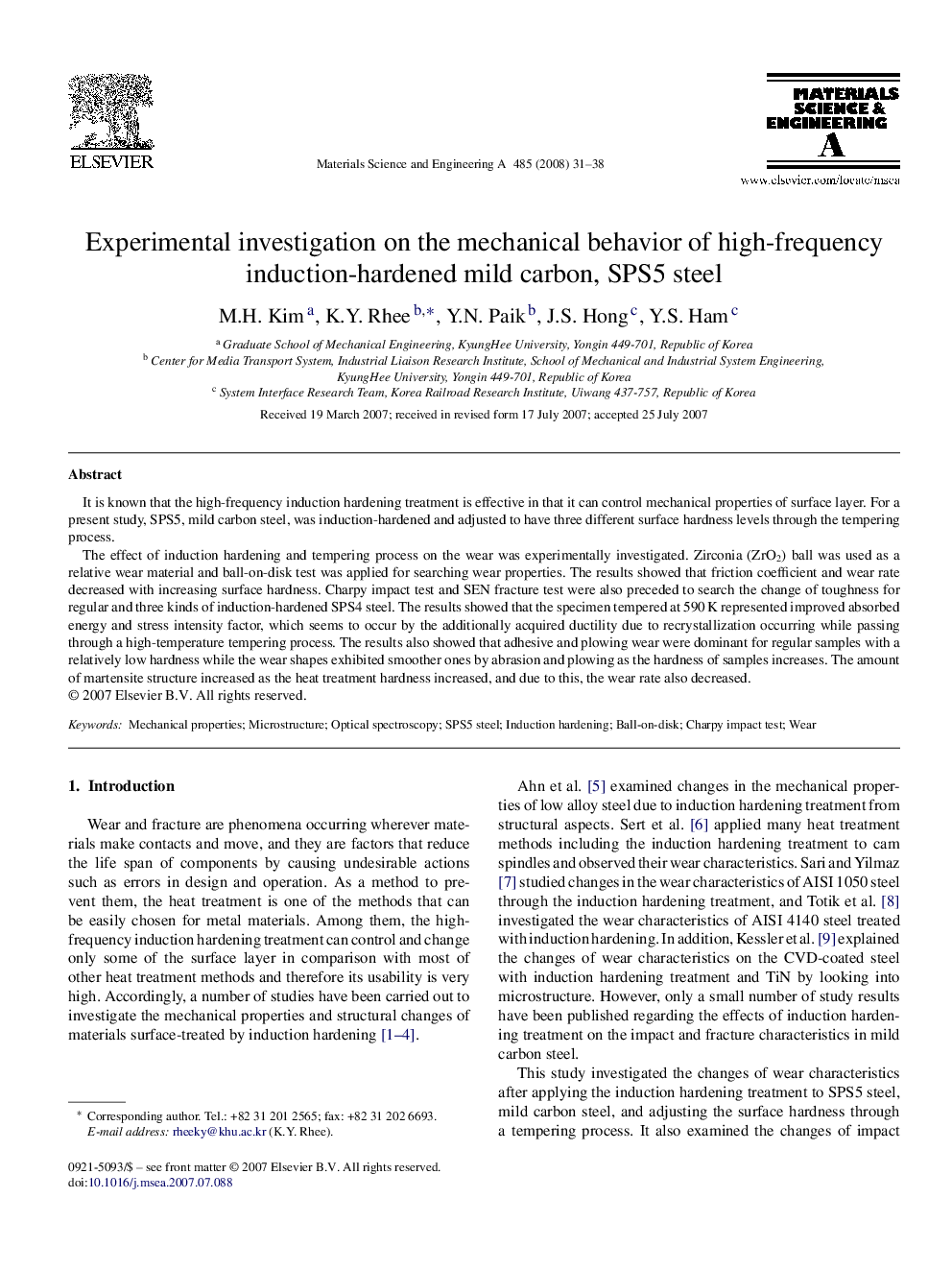| Article ID | Journal | Published Year | Pages | File Type |
|---|---|---|---|---|
| 1582337 | Materials Science and Engineering: A | 2008 | 8 Pages |
It is known that the high-frequency induction hardening treatment is effective in that it can control mechanical properties of surface layer. For a present study, SPS5, mild carbon steel, was induction-hardened and adjusted to have three different surface hardness levels through the tempering process.The effect of induction hardening and tempering process on the wear was experimentally investigated. Zirconia (ZrO2) ball was used as a relative wear material and ball-on-disk test was applied for searching wear properties. The results showed that friction coefficient and wear rate decreased with increasing surface hardness. Charpy impact test and SEN fracture test were also preceded to search the change of toughness for regular and three kinds of induction-hardened SPS4 steel. The results showed that the specimen tempered at 590 K represented improved absorbed energy and stress intensity factor, which seems to occur by the additionally acquired ductility due to recrystallization occurring while passing through a high-temperature tempering process. The results also showed that adhesive and plowing wear were dominant for regular samples with a relatively low hardness while the wear shapes exhibited smoother ones by abrasion and plowing as the hardness of samples increases. The amount of martensite structure increased as the heat treatment hardness increased, and due to this, the wear rate also decreased.
